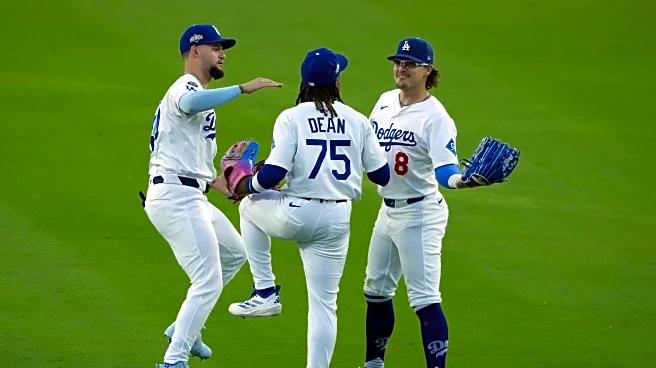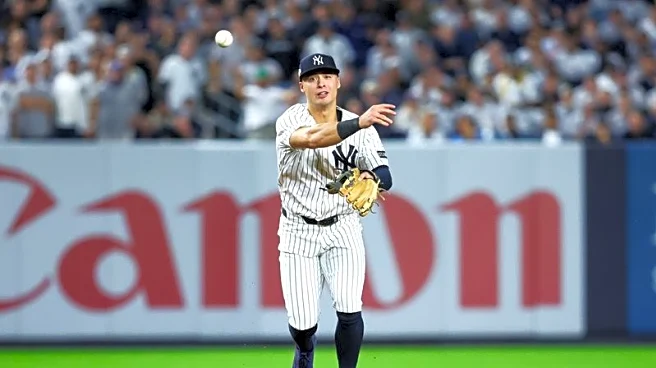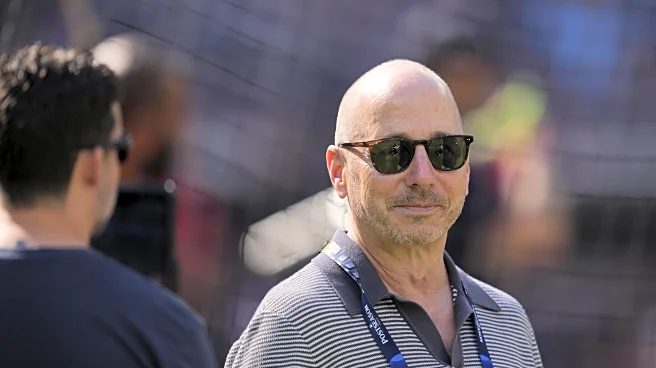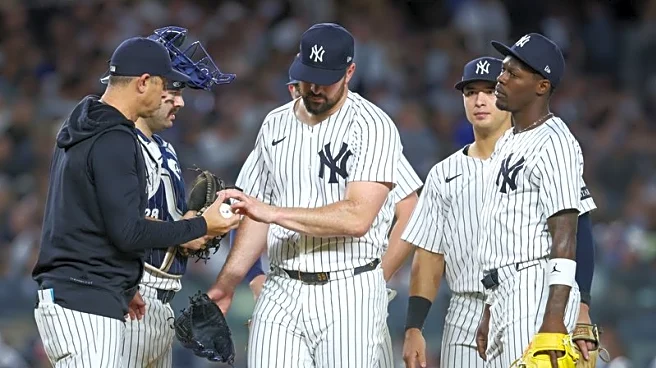What's Happening?
In a recent press conference, Yankees General Manager Brian Cashman and Manager Aaron Boone addressed the team's future plans following the 2025 season. Despite expectations for significant changes, the management indicated that the team will largely
remain the same, with few alterations anticipated. This decision comes amidst news of player injuries, including Anthony Volpe's left shoulder surgery for labrum repair and Carlos Rodon's elbow surgery, which will delay his start in the 2026 season. The Yankees are considering interim solutions for Volpe's position and may need to explore creative options to bolster their starting rotation due to Rodon's absence.
Why It's Important?
The Yankees' decision to maintain their current roster reflects a strategic choice to rely on existing talent despite recent setbacks. This approach could impact the team's performance in the upcoming season, as injuries to key players like Volpe and Rodon may affect their competitiveness. The management's confidence in the current lineup suggests a belief in the team's potential to overcome these challenges. However, the need for additional pitching resources could lead to off-season acquisitions, influencing the team's financial and strategic planning.
What's Next?
As the Yankees prepare for the 2026 season, they will need to address the gaps left by injured players. The management's focus will likely be on finding temporary replacements for Volpe and strengthening the pitching lineup. This may involve scouting for new talent or negotiating trades to ensure a robust roster. Fans and analysts will be watching closely to see how the team navigates these challenges and whether their strategy will pay off in terms of performance and results.
Beyond the Headlines
The Yankees' decision to stick with their current roster raises questions about the long-term strategy of the team. It highlights the balance between maintaining team cohesion and adapting to unforeseen circumstances like player injuries. This situation also underscores the importance of player health management and the potential impact of injuries on career trajectories and team dynamics. The team's approach may set a precedent for how other franchises handle similar challenges.















